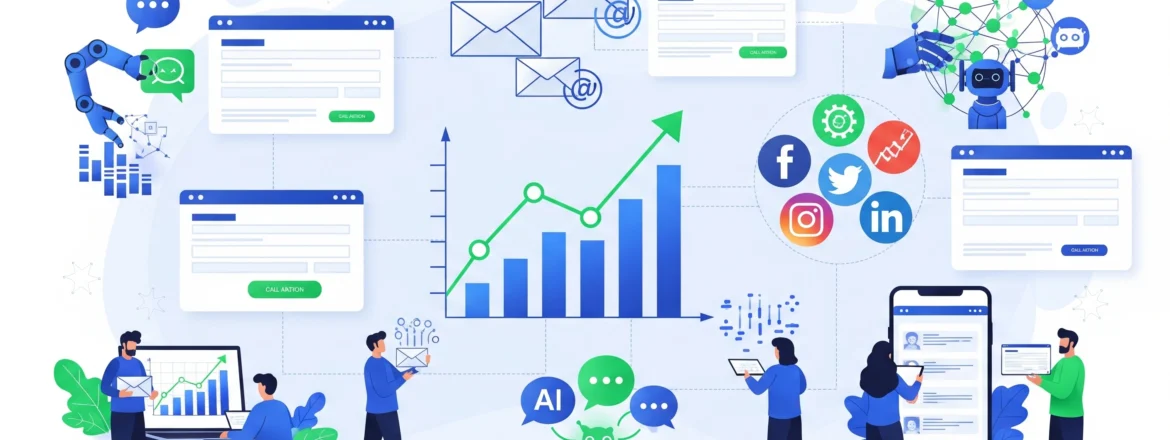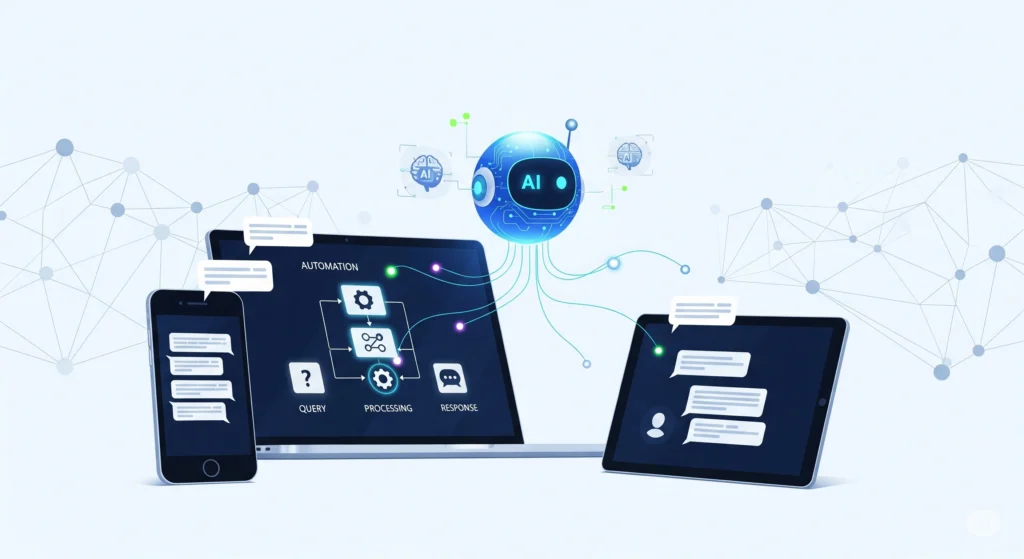
Leads Generation: Proven Strategies to Attract and Convert Customers
Leads Generation is often the toughest nut to crack in business. You pour time into ads, post endlessly on social media, and still end up wondering why the phone isn’t ringing or why the inbox is so quiet. It feels frustrating because without a steady stream of qualified prospects, growth slows down no matter how great your product or service is.
The good news is that bringing in the right leads doesn’t have to feel like guesswork. With clear strategies, modern tools, and a smarter approach, it’s possible to turn that struggle into a predictable system that actually works.
In this guide, we’ll walk through proven methods that successful companies use every day to attract attention, capture interest, and move people closer to becoming paying customers. From organic tactics to automation and AI-powered solutions, you’ll find practical steps that can fit your business and start making a difference right away.
Define What Leads Generation Is and Why It Matters
Leads Generation is the process of sparking interest in your product or service and collecting contact details from people who might actually buy. Think of it as planting seeds in a garden—if you choose the right soil, water consistently, and use smart tools, those seeds eventually grow into customers.
Why does it matter so much? Because sales can’t exist without prospects. No matter how good your offer is, you need a steady pipeline of potential buyers to keep the business alive.
Quick Snapshot of Its Impact on Sales and Growth
It isn’t just about collecting email addresses. Done right, it drives sales growth, shortens the buying cycle, and improves your return on investment. According to Salesforce, businesses that prioritize high-quality leads are far more likely to hit revenue targets.
Why Effective Strategies Drive Growth
Without quality leads, even the best marketing campaigns fall flat. Insights from ReachStream show that companies focusing on accurate targeting enjoy higher engagement and lower wasted ad spend. That means more conversions and a healthier bottom line.
Well-targeted strategies don’t just deliver numbers—they bring in people who are genuinely interested. This saves your team time and effort, letting them focus on closing deals rather than chasing uninterested prospects.
Understanding Your Audience (and Buyer Personas)
Before running campaigns, you need to know exactly who you’re talking to. The Darwill approach highlights how audience segmentation allows marketers to create more personal and relevant offers.
Building buyer personas—fictional yet data-driven profiles of your ideal customers—helps map their goals, pain points, and buying behavior. Once you know who you’re serving, every email, ad, and landing page feels like it was written just for them.
Top Inbound Strategies for Growth
Inbound marketing pulls leads to you naturally. Content marketing sits at the center of this approach. Blogs, explainer videos, and infographics give people real value before they ever speak to a sales rep. Televerde, Close, and Darwill have proven that sharing helpful insights builds trust, which then turns into sales conversations.
SEO also plays a huge role. Ranking high on search engines means your solution shows up right when people are actively looking for it. Combine that with well-placed lead magnets—like free checklists, guides, or landing pages from sites such as Wisepops—and you’ve got a recipe for consistent growth.
Smart Use of Lead Capture Mechanisms
Your website might be full of visitors, but without smart capture tools, they’ll leave without a trace. Wisepops recommends using well-timed popups that don’t annoy but instead offer something valuable.
Landing pages also matter. According to Salesloft, the key elements of high-converting pages include a clear headline, a strong call to action, and real proof—like testimonials or reviews.
Inbound Nurture Tactics
Getting a lead is step one, nurturing is step two. Automated email sequences guide prospects through their decision-making process. On The Map Marketing shows how lead nurturing pipelines keep conversations alive, while Salesforce highlights the power of CRM systems to track every interaction.
The magic lies in personalization. Instead of generic follow-ups, tailor messages to match where the lead is in their buying journey. That’s how you turn cold names into loyal clients.
Outbound / Paid Tactics
Sometimes you have to go out and get leads. PPC ads, social media campaigns, and account-based marketing (ABM) are powerful outbound strategies. Hinge Marketing and ReachStream both highlight how well-targeted ads bring in high-intent leads faster than organic methods.
LeadGenius takes this further with data enrichment—helping you not only reach prospects but also understand them better. That means smarter outreach and fewer wasted efforts.
Leveraging AI, Chatbots & Automation
Artificial intelligence has completely reshaped Leads Generation. Chatbots, for instance, can pre-qualify leads 24/7, answering basic questions and booking meetings while you sleep. Televerde and LeadGenius use these tools to capture prospects instantly, instead of letting them slip away.
Automation also keeps the process consistent. Whether it’s sending reminders, segmenting audiences, or analyzing performance, AI ensures nothing falls through the cracks.

Webinars, Guides, Templates & Downloadables
Not everyone is ready to buy immediately, which is why value-driven content works wonders. Close shows how offering downloadable eBooks, webinar sessions, or ready-made templates gives prospects a reason to share their contact details.
This “give before you get” strategy not only generates leads but also positions your brand as a trusted expert in the industry.
Social & Community-Driven Strategies
People buy from people they trust. That’s why LinkedIn engagement, social selling, and active participation in communities are powerful strategies. Close highlights that being part of discussions where your audience hangs out naturally drives leads.
Even forums like Quora or niche online groups can spark genuine connections that later turn into sales.
Referrals, Events & Offline Strategies
Sometimes old-school works best. Referral programs, podcasts, and in-person events are excellent ways to spread the word. Close and Salesforce both note how speaking engagements and live meetups build credibility and attract leads without feeling “salesy.”
Overcoming Common Challenges
Generating leads isn’t without hurdles. SPP points out common challenges such as outdated strategies, low engagement, and budget constraints. The solution? Stay adaptable, experiment with new tactics, and measure results continuously.
Measurement, Data & Continuous Improvement
You can’t improve what you don’t measure. Key metrics like conversion rates, cost per lead, and overall engagement reveal what’s working and what’s not. Darwill emphasizes using analytics at every stage to fine-tune campaigns and increase performance over time.
Conclusion
Leads Generation isn’t a mystery, it’s a system. By combining inbound and outbound strategies, leveraging AI, and continually analyzing results, you can create a steady flow of qualified prospects.
Start small: pick one tactic from this guide, test it, and refine as you go. Bit by bit, you’ll build a leads engine that powers growth and keeps your sales team busy.
And remember, if you’re looking for expert help with automation, AI agents, and marketing strategies, xtreemetech.com is here to help you scale smarter.
